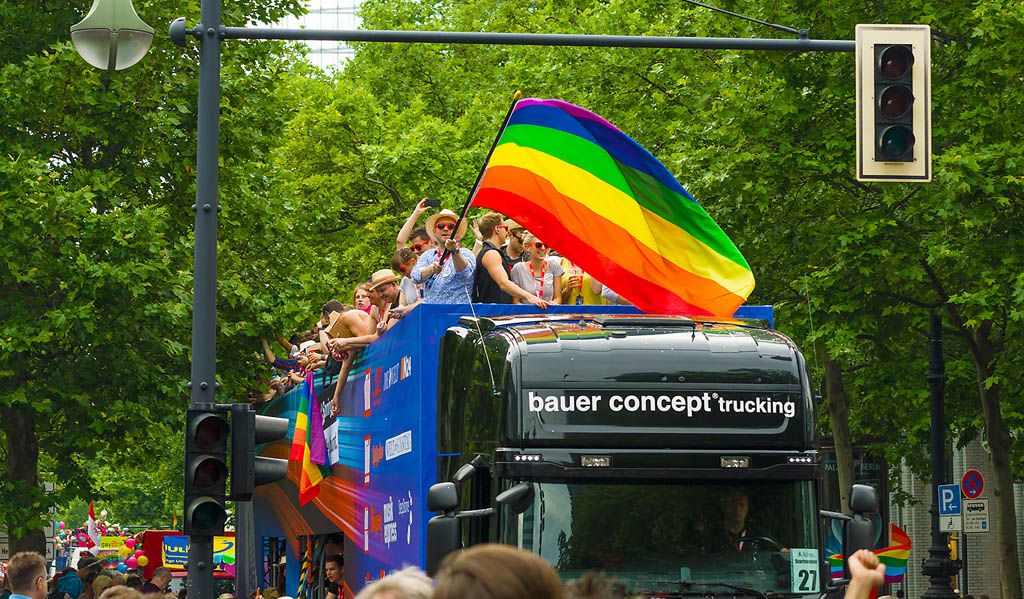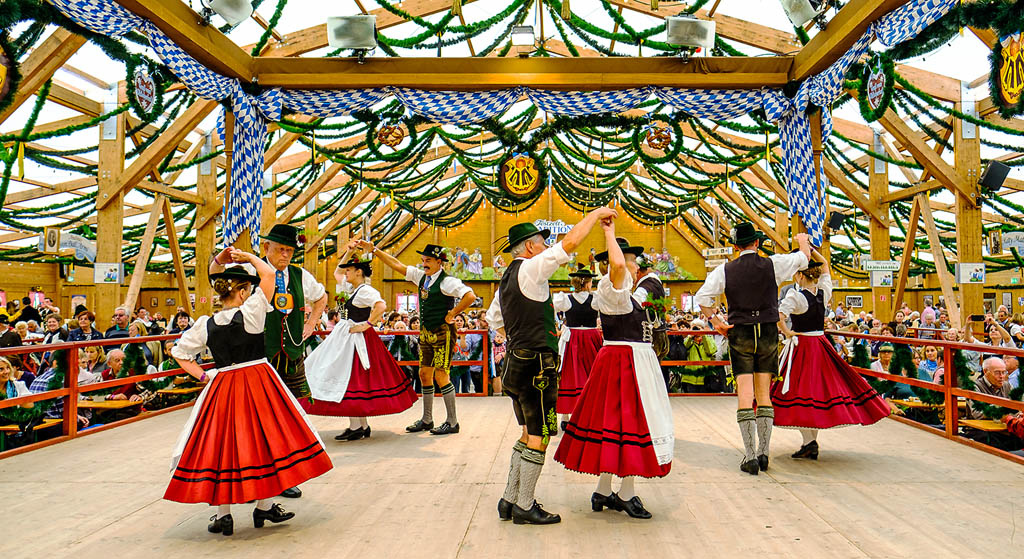February
The German Carnival is still a good excuse for a party. Ski resorts are at their busiest thanks to school holidays, so make reservations.
3 Berlin Film Festival
Berlin Film Festival
Stars, directors and critics sashay down the red carpet for two weeks of screenings and glamour parties at the Berlinale, one of Europe’s most prestigious celluloid festivals.
6 Karneval/Fasching
Karneval/Fasching
The pre-Lenten season is celebrated with street partying, parades, satirical shows and general revelry. Big parties are held in Cologne, the Black Forest and Munich.
March
Days start getting longer and the first inkling of spring is in the air. Fresh herring hits menus, especially along the coastal regions, and dishes prepared with Bärlauch (wild garlic) are all the rage.
April
Even if you stopped believing in the Easter Bunny long ago, there’s no escaping him in Germany. Meanwhile, nothing epitomises the arrival of spring more than the first crop of white asparagus. Germans go nuts for it.
1 Maifest
Maifest
Villagers celebrate the end of winter on 30 April by chopping down a tree for a Maibaum (Maypole). painting, carving and decorating it, then staging a merry revel with traditional costumes, singing and dancing.
May
One of the loveliest months, often surprisingly warm and sunny, perfect for ringing in beer-garden season. Plenty of public holidays, which Germans turn into extended weekends or miniholidays, resulting in busy roads and lodging shortages.
z Karneval der Kulturen
Karneval der Kulturen
Hundreds of thousands of revellers celebrate Berlin’s multicultural tapestry with parties, exotic nosh and a fun parade of flamboyantly dressed dancers, DJs, artists and musicians shimmying through the streets of Kreuzberg.
1 Labour Day
Labour Day
On 1 May, a public holiday, some cities host political demonstrations for workers’ rights. In Berlin, past protests have taken on a violent nature, although now it’s mostly a big street fair.
1 Muttertag
Muttertag
Mothers are honoured on the second Sunday of May, much to the delight of florists, sweet shops and greeting-card companies. Make restaurant reservations far in advance.
June
Germany’s festival pace quickens, while gourmets can rejoice in the bounty of fresh, local produce in the markets. Life moves outdoors: the summer solstice means the sun doesn’t set until around 9.30pm.
1 Vatertag
Vatertag
Father’s Day, now also known as Männertag (Men’s Day), is essentially an excuse for men to get liquored up with the blessing of the missus. It’s always on Ascension Day.
6 Christopher Street Day
Christopher Street Day
No matter your sexual persuasion, come out and paint the town pink at major LGBTIQ+ pride celebrations in Berlin and Cologne.

July
School’s out for the summer and peak travelling season begins, so you’d better be the gregarious type. Whether you’re headed to the mountains or the coast, book accommodation in advance. It won’t be the Med, but swimming is now possible in lakes, rivers, and the Baltic and North Seas.
August
Germany’s hottest month is often cooled by afternoon thunderstorms. It’s the season for Pfifferlinge (chanterelle mushrooms) and fresh berries, which you can pick in the forests.
6 Wine Festivals
Wine Festivals
With grapes ripening to a plump sweetness, wine festivals have tastings, folkloric parades, fireworks and the election of local and regional wine queens. Dürkheimer Wurstmarkt (www.duerkheimer-wurstmarkt.de) is one of the biggest and most famous.
September
Often a great month weather-wise – sunny but not too hot. The main travel season is over but it’s still busy thanks to wine and autumn festivals. Trees may start turning into a riot of colour towards the end of the month.
2 Berlin Marathon
Berlin Marathon
Sweat it out with the other 50,000 runners or just cheer ’em on during Germany’s biggest street race, at which nine world records have been set since 1977.
1 Erntedankfest
Erntedankfest
Rural towns celebrate the harvest with decorated church altars, Erntedankzug (processions) and villagers dressed in folkloric garments.
6 Oktoberfest
Oktoberfest
Munich’s legendary beer-swilling party gets started around mid-September. Enough said.

October
Children are back in school and most people at work as days get shorter, colder and wetter. Trade-fair season kicks off, affecting lodging prices and availability in Frankfurt, Cologne, Berlin, Hamburg and other cities. Tourist offices, museums and attractions keep shorter hours. Some close for winter.
November
This can be a dreary month mainly spent indoors. However, queues at tourist sights are short, and theatre, concert, opera and other cultural events are plentiful. Bring warm clothes and rain gear.
z St Martinstag
St Martinstag
This festival (10–11 November) honours 4th-century St Martin, known for his humility and generosity. It sees a lantern procession and a re-enactment of the famous scene where the saint cuts his coat in half to share with a beggar, followed by a feast of stuffed roast goose.
December
Cold and sun-deprived days are brightened by Advent, the four weeks of festivities preceding Christmas, celebrated with enchanting markets, illuminated streets, Advent calendars, candle-festooned wreaths, home-baked cookies and other rituals. The ski resorts usually get their first dusting of snow.
1 Nikolaustag
Nikolaustag
On the eve of 5 December, German children put their boots outside the door hoping that St Nick will fill them with sweets and small toys overnight. Ill-behaved children, though, may find only a prickly rod left behind by St Nick’s helper, Knecht Ruprecht.
7 Christmas Markets
Christmas Markets
Mulled wine, spicy gingerbread cookies, shimmering ornaments – these and lots more are typical features of German Christmas markets, held from late November until late December. Nuremberg’s Christkindlesmarkt is especially famous.
z Silvester
Silvester
New Year’s Eve is called ‘Silvester’, in honour of the 4th-century pope under whom the Romans adopted Christianity as their official religion. The new year is greeted with fireworks launched by thousands of amateur pyromaniacs.